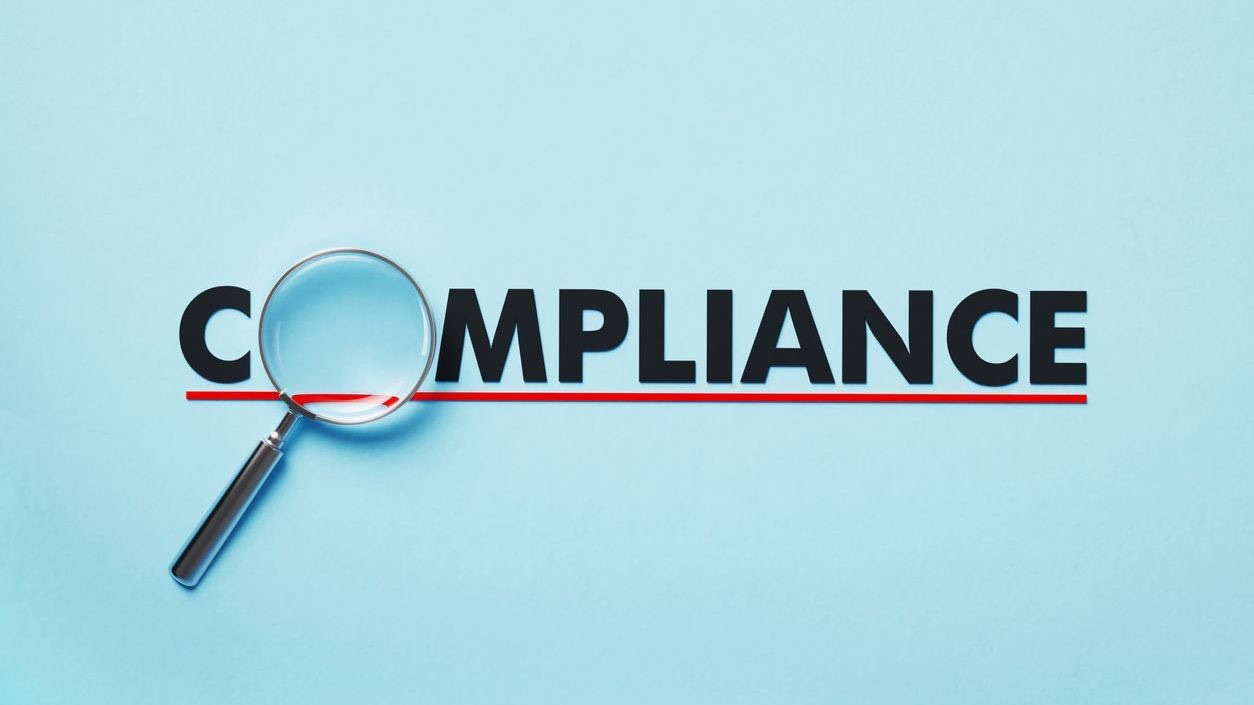Effective employee scheduling is the backbone of any successful pizzeria in Seattle, Washington. In a city known for its vibrant food scene and tech-forward approach to business, pizzeria owners face unique challenges when it comes to managing staff schedules. From handling the rainy season rush of delivery orders to accommodating the ebb and flow of tourists and local customers, Seattle pizzerias require specialized scheduling solutions that balance employee satisfaction with operational efficiency. The right scheduling service doesn’t just solve logistical problems—it can dramatically improve your bottom line by optimizing labor costs, reducing employee turnover, and ensuring customer satisfaction through properly staffed shifts.
Seattle’s competitive restaurant market and progressive labor laws make scheduling particularly complex for small business pizzerias. With the city’s Fair Workweek ordinance and specific requirements for meal breaks and rest periods, pizzeria owners need scheduling tools that ensure compliance while maximizing productivity. Additionally, the diverse workforce in Seattle—from college students seeking part-time work to career hospitality professionals—requires flexible scheduling approaches that accommodate various needs and preferences. Implementing the right scheduling service can transform this potential headache into a strategic advantage for your pizzeria.
The Unique Scheduling Challenges for Seattle Pizzerias
Seattle pizzeria owners face scheduling challenges unlike those in many other cities. The distinct seasonal patterns, from rainy winter evenings with high delivery demand to bustling summer tourists, create scheduling complexities that require thoughtful planning. Additionally, Seattle’s tech-oriented culture means customers expect convenience and efficiency, putting pressure on pizzerias to staff appropriately at all times. Understanding these unique challenges is the first step toward implementing effective scheduling solutions.
- Weather-Dependent Demand: Seattle’s infamous rain significantly increases delivery orders, requiring flexible staffing to handle surge periods without overstaffing during slower times.
- Competitive Labor Market: With major tech companies and a thriving restaurant scene competing for workers, scheduling must accommodate employee preferences to reduce turnover.
- Compliance Requirements: Seattle’s Secure Scheduling Ordinance requires advance notice of schedules and predictability pay for changes, adding complexity to scheduling processes.
- Traffic Considerations: Seattle’s traffic patterns affect both customer flow and employee commutes, necessitating schedules that account for peak congestion times.
- Multiple Role Management: Pizzeria staff often cover multiple positions (server, cook, delivery), requiring scheduling systems that track qualifications and cross-training.
Addressing these challenges requires specialized scheduling solutions like Shyft’s employee scheduling platform, which offers tools specifically designed for the complexities of food service businesses. By implementing scheduling software that accounts for these Seattle-specific factors, pizzeria owners can transform scheduling from a daily struggle into a strategic advantage.
Essential Features in Scheduling Software for Seattle Pizzerias
When selecting scheduling software for your Seattle pizzeria, certain features are particularly valuable for addressing the unique challenges of the local market. The right platform will not only simplify the scheduling process but also help you adapt to Seattle’s dynamic business environment and comply with local regulations. Modern scheduling solutions offer powerful tools that can transform how you manage your workforce.
- Mobile Accessibility: Staff need to view schedules, request changes, and pick up shifts on the go through user-friendly mobile apps that provide real-time updates and notifications.
- Compliance Automation: Software that automatically flags potential compliance issues with Seattle’s labor laws, including secure scheduling requirements and mandatory break periods.
- Demand Forecasting: Intelligent systems that analyze historical data, weather patterns, and local events to predict busy periods and optimize staffing levels accordingly.
- Shift Swapping Capabilities: Platforms that enable employees to trade shifts within established parameters, reducing manager workload while maintaining appropriate coverage.
- Integration Capabilities: Seamless connection with POS systems, payroll software, and other business tools to create a unified workflow and eliminate duplicate data entry.
Modern scheduling solutions like Shyft’s shift marketplace enable employees to easily trade shifts, reducing the administrative burden on managers while ensuring appropriate coverage. This technology not only simplifies operations but also contributes to higher employee satisfaction and retention, which is crucial in Seattle’s competitive labor market. The right scheduling software becomes a valuable investment that pays dividends through improved operational efficiency and employee engagement.
Optimizing Labor Costs While Maintaining Quality Service
For Seattle pizzeria owners, balancing labor costs with exceptional customer service presents a continuous challenge. Effective scheduling is the key to maintaining this delicate equilibrium, especially when facing Seattle’s higher minimum wage and competitive labor market. Strategic scheduling approaches can help optimize staffing levels to match demand patterns while ensuring quality service that keeps customers coming back.
- Data-Driven Staffing: Utilize historical sales data and predictive analytics to match staffing levels precisely to expected demand, reducing both understaffing and overstaffing situations.
- Staggered Shift Start Times: Implement staggered schedules that bring staff in incrementally as business increases, rather than having full staff throughout slower periods.
- Cross-Training Programs: Develop versatile team members who can handle multiple roles, allowing for more flexible scheduling and efficient labor utilization during varying demand levels.
- Peak Performance Scheduling: Assign your most experienced and efficient team members to peak hours when their skills will have the greatest impact on service quality and revenue.
- Labor Cost Percentage Tracking: Continuously monitor labor costs as a percentage of sales, using scheduling software that provides real-time analysis and alerts when thresholds are exceeded.
Advanced workforce analytics tools can help pizzeria owners identify patterns and opportunities for optimization that might otherwise go unnoticed. By implementing these labor cost management strategies through effective scheduling practices, Seattle pizzerias can maintain the high-quality service customers expect while keeping labor costs under control. This balanced approach is essential for long-term sustainability in Seattle’s competitive restaurant market.
Compliance with Seattle’s Labor Laws and Regulations
Seattle’s progressive labor laws create a complex compliance landscape for pizzeria owners. Navigating these regulations is essential not only to avoid costly penalties but also to maintain positive employee relations and business reputation. Understanding and implementing scheduling practices that align with local requirements is a critical aspect of running a successful pizzeria in Seattle.
- Secure Scheduling Ordinance: Seattle requires large employers to provide work schedules at least 14 days in advance and pay compensation for last-minute schedule changes, with similar provisions increasingly affecting smaller businesses.
- Minimum Wage Requirements: Seattle’s minimum wage ($17.27 for small employers as of 2023) exceeds the state level, requiring careful budget planning for optimal scheduling without exceeding labor cost targets.
- Meal and Rest Break Compliance: Washington state mandates specific break requirements that must be incorporated into scheduling, including 10-minute paid rest breaks for every 4 hours worked and 30-minute meal breaks for shifts over 5 hours.
- Sick Leave Provisions: Seattle’s Paid Sick and Safe Time Ordinance requires accrual of paid sick leave, necessitating scheduling systems that can handle last-minute coverage needs when employees use this benefit.
- Overtime Management: Proper scheduling to minimize unnecessary overtime while ensuring appropriate coverage during busy periods is essential for compliance and cost control.
Using scheduling software with compliance features helps pizzeria owners navigate these complex requirements more effectively. These systems can automatically flag potential violations, track required breaks, and maintain documentation of scheduling practices that may be needed during labor audits. Staying ahead of compliance issues through proper scheduling not only avoids penalties but contributes to a more positive workplace culture that benefits both employees and the business.
Empowering Employees Through Self-Service Scheduling Options
Modern scheduling approaches that give employees more control over their work hours are becoming increasingly popular in Seattle’s restaurant industry. This shift toward employee empowerment not only improves staff satisfaction and retention but also reduces the administrative burden on pizzeria managers. Implementing self-service scheduling options creates a win-win situation for both employees and the business.
- Preference-Based Scheduling: Systems that allow employees to input availability and preferences, creating schedules that better accommodate personal needs while still meeting business requirements.
- Employee-Managed Shift Swaps: Platforms that enable staff to trade shifts directly with qualified colleagues, with manager oversight but minimal intervention required.
- Transparent Open Shift Management: Digital solutions that display available shifts to all qualified team members, allowing them to pick up additional hours when it suits their schedule.
- Mobile Schedule Access: Apps that provide real-time schedule information, shift change notifications, and communication tools to enhance flexibility and responsiveness.
- Time-Off Request Automation: Streamlined processes for requesting and approving time off that integrate directly with the scheduling system to prevent coverage gaps.
Implementing employee self-service scheduling options leads to greater work-life balance for staff and significantly reduces turnover—a crucial advantage in Seattle’s competitive labor market. When employees have more control over their schedules, they’re more likely to remain with the business long-term, reducing the substantial costs associated with recruiting and training new staff. Additionally, self-service scheduling dramatically reduces the time managers spend creating and adjusting schedules, allowing them to focus on other aspects of running the pizzeria.
Managing Seasonal Fluctuations in Seattle’s Pizza Market
Seattle’s distinct seasons and event calendar create predictable yet challenging fluctuations in pizzeria demand. From the summer tourist influx to the rainy winter delivery boom, successful scheduling requires adapting to these patterns while maintaining operational efficiency. Creating flexible staffing approaches that scale with seasonal changes is essential for pizzeria profitability throughout the year.
- Seasonal Staffing Strategies: Develop core year-round staff supplemented by seasonal employees during predictable high-demand periods like summer tourist season or major Seattle events.
- Weather-Based Scheduling: Implement systems that factor in weather forecasts for Seattle’s rainy season, when delivery orders typically increase significantly.
- Event Calendar Integration: Align scheduling with Seattle’s event calendar, ensuring proper staffing for game days at T-Mobile Park or Lumen Field, festivals, and conventions that drive restaurant traffic.
- Holiday Planning: Create specialized schedules well in advance for major holidays, balancing employee requests for time off with business needs during these high-demand periods.
- Flexible Shift Durations: Implement shorter shifts during shoulder seasons or use split shifts during days with distinct lunch and dinner rushes to maximize efficiency.
Using advanced analytics to identify seasonal patterns allows pizzeria owners to schedule more accurately and reduce labor waste. Historical data analysis helps predict staffing needs for specific seasons, weather conditions, and local events, enabling proactive rather than reactive scheduling approaches. By adapting schedules to Seattle’s unique seasonal patterns, pizzerias can maintain consistent service quality while optimizing labor costs throughout the year’s natural business cycles.
Leveraging Technology for Team Communication and Collaboration
Effective team communication is essential for pizzeria operations, particularly when schedules change or unexpected situations arise. Modern scheduling platforms offer integrated communication tools that keep staff connected and informed, reducing confusion and improving operational efficiency. In Seattle’s tech-savvy environment, leveraging these digital communication capabilities can give pizzerias a competitive edge.
- Centralized Communication Channels: Unified platforms where schedule updates, policy changes, and daily announcements can be shared with all staff or targeted groups.
- Real-Time Notifications: Instant alerts for schedule changes, shift coverage needs, or important updates that require immediate attention from team members.
- Group Messaging Features: Tools that allow communication between specific teams (kitchen staff, delivery drivers, servers) for role-specific coordination.
- Shift Handover Documentation: Digital systems for recording important information between shifts to ensure smooth transitions and consistent customer service.
- Manager Announcements: Broadcast capabilities for distributing critical information to all staff simultaneously, ensuring everyone receives consistent messaging.
Implementing integrated team communication tools significantly improves operational coordination and reduces miscommunications that can affect customer service. These technologies create a connected workplace where staff feel informed and engaged, leading to higher job satisfaction and lower turnover rates. Additionally, managers can respond more quickly to unexpected situations like employee call-outs or sudden demand surges, maintaining service quality even during challenging circumstances.
Balancing Part-Time and Full-Time Staff in Seattle Pizzerias
Seattle’s diverse workforce includes students from institutions like the University of Washington, career hospitality professionals, and those seeking supplemental income. Creating a scheduling strategy that effectively balances part-time and full-time staff is essential for pizzeria operations. This balance affects not only labor costs but also team dynamics, training requirements, and service consistency.
- Core Team Development: Building a reliable full-time staff to handle key operational roles while strategically deploying part-time employees for peak periods and specialized functions.
- Availability Matrix Creation: Implementing systems that track complex availability patterns across a diverse workforce, including students with changing class schedules and employees with other commitments.
- Hour Distribution Strategies: Developing fair approaches to allocating hours between part-time and full-time staff while ensuring operational needs are met during all shifts.
- Benefit Threshold Management: Carefully tracking hours to comply with benefit requirements for employees approaching full-time status under Seattle and Washington regulations.
- Skill-Based Scheduling: Ensuring each shift has an appropriate mix of experienced full-time staff and part-time employees to maintain service quality and operational efficiency.
Modern flexible scheduling solutions make it easier to manage complex staff compositions, creating optimal schedules that balance business needs with employee preferences. This balanced approach helps Seattle pizzerias maintain scheduling flexibility while providing the stability needed for consistent operations. Additionally, thoughtful scheduling that respects both full-time and part-time staff needs contributes significantly to team cohesion and overall workplace satisfaction.
Implementing a New Scheduling System in Your Pizzeria
Transitioning to a new scheduling system requires careful planning and execution to minimize disruption to your pizzeria’s operations. The implementation process should be approached strategically, with clear communication and proper training to ensure staff adoption and maximize the benefits of the new system. A well-executed implementation sets the foundation for long-term scheduling success.
- Needs Assessment: Thoroughly evaluate your pizzeria’s specific scheduling challenges and requirements before selecting a system that addresses your particular pain points.
- Staff Involvement: Include key team members in the selection and implementation process to gather valuable input and build buy-in for the new system.
- Phased Rollout: Consider implementing the new scheduling system in stages, starting with basic functions before adding more complex features to avoid overwhelming staff.
- Comprehensive Training: Provide thorough training for managers and employees on using the new system, with different approaches tailored to various learning styles and technical comfort levels.
- Data Migration Planning: Carefully plan the transfer of existing employee information, availability data, and scheduling templates to the new system to maintain continuity.
Following best practices for implementation significantly increases the chances of successful adoption and positive outcomes. The initial transition period requires patience and consistent communication, but the long-term benefits of improved scheduling efficiency make this investment worthwhile. Additionally, scheduling software providers often offer implementation support and resources to help pizzeria owners navigate this process successfully. After implementation, regular review and optimization ensure the system continues to meet your pizzeria’s evolving needs.
Measuring the Impact of Improved Scheduling Practices
To justify the investment in scheduling software and processes, pizzeria owners need to measure the tangible impacts on their business. Establishing key performance indicators (KPIs) and tracking improvements over time provides valuable insights into the return on investment and helps identify areas for further optimization. Effective measurement creates a feedback loop that drives continuous improvement in scheduling practices.
- Labor Cost Percentage: Track labor costs as a percentage of sales before and after implementing new scheduling practices to quantify financial impact.
- Employee Turnover Metrics: Monitor changes in staff retention rates, as improved scheduling often leads to higher job satisfaction and reduced turnover costs.
- Schedule Adherence: Measure reductions in no-shows, late arrivals, and unplanned overtime as indicators of scheduling effectiveness.
- Customer Satisfaction Correlation: Analyze the relationship between proper staffing levels and customer satisfaction scores or review ratings.
- Management Time Savings: Quantify the reduction in hours managers spend creating and adjusting schedules, allowing for reallocation to other business priorities.
Using analytics tools to track scheduling performance provides pizzeria owners with actionable insights for continuous improvement. These metrics not only validate the value of scheduling investments but also highlight opportunities for further optimization. By establishing a data-driven approach to scheduling, Seattle pizzerias can make informed decisions that balance operational efficiency, employee satisfaction, and customer experience in ways that directly impact the bottom line.
Conclusion: Creating a Sustainable Scheduling Strategy for Your Seattle Pizzeria
Effective scheduling is not just an operational necessity but a strategic advantage for Seattle pizzerias. By implementing the right scheduling tools and practices, you can transform what is often viewed as an administrative burden into a driver of business success. The right approach balances the needs of your business with those of your employees, creating a sustainable model that supports growth and stability. As Seattle’s restaurant industry continues to evolve, pizzerias that master scheduling gain a significant competitive edge.
To create a sustainable scheduling strategy, start by selecting a scheduling platform that addresses your specific needs and integrates with your existing systems. Involve your team in the implementation process to build buy-in and gather valuable input. Continuously measure the impact of your scheduling practices on key business metrics, and be willing to adapt as you learn what works best for your unique operation. By viewing scheduling as an ongoing process of optimization rather than a fixed system, you’ll be able to navigate Seattle’s dynamic business environment successfully while building a reputation as an employer of choice in the competitive restaurant labor market. With the right tools and approaches, effective scheduling becomes a cornerstone of your pizzeria’s long-term success.
FAQ
1. How can scheduling software reduce labor costs for my Seattle pizzeria?
Scheduling software reduces labor costs through several mechanisms. First, it enables data-driven staffing decisions based on historical sales patterns, ensuring you’re not overstaffed during slow periods. Second, it helps prevent unnecessary overtime by tracking hours and alerting managers when employees approach overtime thresholds. Third, it facilitates more efficient shift coverage when employees call out, reducing the need to bring in additional staff at the last minute. Finally, many systems include forecasting tools that align staffing with projected demand based on factors like weather, local events, and seasonal patterns that affect Seattle pizzerias. Studies show that businesses implementing advanced scheduling software typically reduce labor costs by 3-5% while maintaining or improving service quality.
2. What scheduling compliance issues are specific to Seattle restaurants?
Seattle has several specific labor regulations that affect restaurant scheduling. The Secure Scheduling Ordinance requires larger employers to provide work schedules 14 days in advance and compensate employees for last-minute changes. While this currently applies to larger businesses, similar expectations are increasingly affecting smaller establishments. Seattle’s minimum wage ($17.27 for small employers as of 2023) exceeds the state level, affecting scheduling budgets. Additionally, Washington state requires specific meal and rest breaks that must be incorporated into schedules, including 10-minute paid breaks for every 4 hours worked and 30-minute meal breaks for shifts over 5 hours. Seattle’s Paid Sick and Safe Time Ordinance also affects scheduling, as employees can use accrued sick time with minimal notice, requiring flexible coverage solutions. Modern scheduling systems help track these requirements and flag potential compliance issues.
3. How can I implement a new scheduling system with minimal disruption?
Implementing a new scheduling system requires thoughtful planning to minimize operational disruption. Start by selecting a system that specifically addresses your pizzeria’s pain points, whether that’s compliance tracking, employee self-service, or demand forecasting. Involve key staff members in the selection process to build buy-in from the beginning. Consider a phased implementation approach, starting with basic scheduling functions before adding more complex features. Provide comprehensive training tailored to different roles and technical comfort levels within your team. Run parallel systems temporarily (keeping your old method alongside the new one) to ensure a smooth transition. Communicate clearly about the benefits of the new system and how it will address current challenges. Finally, designate “power users” on your team who can help support others during the transition. Proper training and change management significantly reduce implementation challenges.
4. What are the best practices for scheduling delivery drivers in Seattle?
Scheduling delivery drivers in Seattle requires consideration of several unique factors. First, implement staggered shifts that align with order volume patterns, particularly during rainy seasons when delivery demand increases. Factor in Seattle’s traffic patterns and delivery zones, scheduling more drivers during high-congestion periods and assigning them to specific neighborhood clusters for efficiency. Create a blend of scheduled shifts and on-call or flexible shifts that can be activated during unexpected demand surges. Use weather forecasting tools to anticipate delivery volume increases during poor weather. Implement technology that tracks delivery times and customer wait periods to refine future scheduling. Additionally, consider Seattle’s terrain and climate when scheduling—hillier neighborhoods or areas more affected by weather may require different staffing approaches than flatter, more accessible zones. Strategic driver scheduling directly impacts delivery times, customer satisfaction, and profitability.
5. How can I balance employee preferences with business needs in my schedule?
Balancing employee preferences with business needs is a delicate but achievable goal. Start by implementing a system that allows employees to input their availability and scheduling preferences electronically, creating a database of constraints and requests. Establish clear policies about which business needs take priority during which periods, such as weekend availability requirements or holiday rotation expectations. Use scheduling software that can process both preference data and business requirements to generate optimized schedules. Create a transparent process for handling time-off requests, with clear deadlines and priority frameworks. Consider implementing a shift marketplace where employees can trade shifts within established parameters, giving them flexibility while maintaining appropriate coverage. Regularly review scheduling effectiveness and employee satisfaction, making adjustments as needed. Research shows that accommodating preferences where possible significantly improves employee satisfaction and retention while still meeting business needs.












